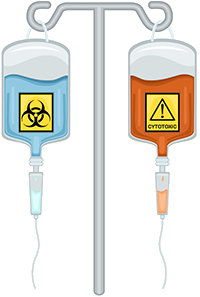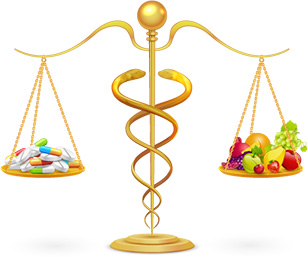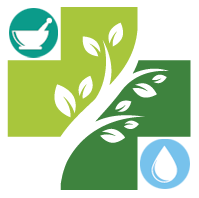Conventional cancer treatments...

Conventional medicine focuses primarily on chemotherapy drugs and radiation to treat cancer. It is a "trauma-based" response to the disease, meaning that once the body has succumbed to cancer, the medicine is used as a method of attacking or destroying the disease. This is done by using one or a combination of the following therapies:
- Laser surgery: A beam of high-intensity light of a specific wavelength is used to shrink or destroy tumors or precancerous growths. It is very precise, causing less damage to surrounding healthy tissue.
- Chemotherapy: Uses drugs to destroy cancer cells. Also damages healthy cells and causes unwanted side effects. Several chemotherapy drugs are listed by the World Health Organization as cancer-causing agents.
- Radiation therapy: Uses high-energy radiation to shrink and kill cancer cells by damaging their DNA. Also damages healthy cells and causes unwanted side effects.
- Immunotherapy: Treats cancer by stimulating the body's immune system.
- Cancer Vaccines: A form of immunotherapy, usually made from the patient's own tumor cells.
- Stem cell transplants: Used to treat cancers affecting bone marrow. Very high doses of chemo (often along with radiation) are used to destroy both cancer cells and stem cells in the bone marrow. Stem cells are then given to replace those that were destroyed.
- Photodynamic therapy: Uses a drug called a photosensitizer (which is injected into the bloodstream) and a specific wavelength of light that "activates" the photosensitizer. When exposed to the light, the photosensitizers produce a form of oxygen that kills nearby cells. Use for tumors on or near the skin surface as the light can only penetrate 1 centimeter of tissue.
Although conventional treatments such as chemotherapy, surgery, and radiation can help to destroy cancer cells and remove tumors, they are focused solely on the destruction of the malignancy. They do not place any focus on addressing the root cause of cancer. Nor do they place primary focus on strengthening the immune system to prevent recurrence. This is why treating cancer without removing the diet and lifestyle factors falls far short of being called a successful approach to cancer treatment. In essence, all it does is treat the effect, not the cause while seriously damaging the immune system. This is why the recurrence rate of cancer is high, and why when it returns, it is much more aggressive the second time around.
Conventional medicine success rates are much higher when used in conjunction with natural methods of healing cancer.
The Drawbacks of Chemotherapy & Radiation
"Cancers destroyed by chemotherapy and radiation often return more aggressively after their initial treatment because when they are destroyed, they release substances that react with cancer stem cells."
Dr. Max Wicha, The
Comprehensive Cancer
|
Broadly speaking, traditional treatments are unquestionably toxic. They are considered both highly invasive and highly destructive to the body. The agents used to destroy cancer also destroy healthy cells and can seriously damage an immune system that is already compromised. Sometimes, the treatment can be worse than the disease. Often, chemotherapy drugs can only promise a limited chance of success, while the drugs themselves cause side effects that seriously impact the quality of life for the remaining time left. Toxemia from chemotherapy drugs is a common cause of death in cancer patients.
When someone is diagnosed with cancer, the traditional approach is to get standard treatment ASAP. These treatments often include surgery, chemotherapy, and radiation. Patients are warned that failure to begin these treatments immediately can significantly reduce their chance of survival. Yet there are many that disagree with this approach, including doctors themselves:
- Not only do cancer treatments fail, they can make the situation worse. Dr. Max Wicha, the founder of The Comprehensive Cancer at The University of Michigan is a pioneering researcher in why cancers recur and metastasize to other parts of the body. Cancers destroyed by chemotherapy and radiation often return more aggressively after their initial treatment because when they are destroyed, they release substances that react with cancer stem cells. These substances are inflammatory in nature and can activate the cancer stem cells. Dr. Wicha states that these stem cells can remain alive even after the tumor is eradicated by chemotherapy and radiation. The likelihood of hibernating cancer cells being signaled back into action in the future is high if no action is taken to support and strengthen the immune system, and remove the diet and lifestyle factors that contributed to the original cancer.
- In trying to destroy the cancer cells, the side effects of the cancer drugs and therapies cause irreparable damage to the body, including causing death in the patient.
- Drug interactions, such as chemotherapy drugs interacting with other medications, can reduce the effectiveness of the chemotherapy drugs, or cause other negative effects. Any drug or over-the-counter prescribed medication that a patient is taking has the potential to have negative effects on cancer drug effectiveness.
- When dealing with more than one type of cancer, treatment is much more complex. There are also different types of the same cancer (for example, there are at least 9 different types of breast cancer).
- The factors that caused the cancerous condition are not addressed and eliminated (or are only partially addressed).
- The disease is too advanced and has progressed too far, therefore the body is too weak to withstand the treatment.
Chemotherapy Drugs Are Highly Toxic
- The International Agency for Research on Cancer (a division of the World Health Organization) lists 9 chemotherapy drugs and two "combinational therapies" as known human carcinogens (cancer-causing agents). Another 9 drugs are listed as "probable" and 10 as "possible" carcinogens.
- A long-term study by the Netherlands Cancer Institute showed that modern radiation increases the risk of heart disease in women who receive it following surgery for breast cancer.(1)
- The federal government issued an unusually detailed alert to the nation's 5.5 million healthcare workers stating: The powerful drugs used in chemotherapy can themselves cause cancer and pose a risk to nurses, pharmacists and others who handle them. A housekeeper who dumps the contents of a bedpan into a toilet might not realize that the waste is toxic: "Sometimes, 80% of the active ingredient in the drug goes right through the patient's system," said Borwegen, who also served on the NIOSH work group.(2)
Oncologists State They Themselves Would Refuse Traditional Treatments
The highly destructive nature of cancer treatments is well established in the medical community. Although many oncologists treat their patients with traditional cancer treatments, many of those treating them state that they would not use the same treatments upon themselves should they ever suffer from cancer:
McGill Cancer Center scientists surveyed 118 oncologists who specialized in lung cancer. They were asked what they would do in terms of treatment if they were to suffer from lung cancer. Not only did 75% of the doctors state that they would deny traditional chemotherapy choices, but they also stated they would not allow their family members to undergo the traditional treatments either.(3)
Request Pre-Chemo Testing
Chemo is often the first therapy prescribed in traditional medicine. It may be recommended as the best treatment option for you, but it can also vary significantly in how effective it is from one person to the next. For example, certain chemotherapy drugs can be more effective than others for certain types of cancer. Because we are all, biologically speaking, individuals, there are many variables that can affect the success of the drug.
If you have been prescribed chemotherapy, take the first step by finding out what the most effective chemotherapy drugs are for your specific cancer through something called chemosensitivity testing. This can mean the difference between treatment success or failure.
Chemosensitivity testing (or prechemo testing) involves testing a patient’s cancer cells with various chemotherapy drug types (or combination of drugs) to observe the reactions of the drug. This helps patients choose the most effective drug for their cancer type and not waste any time on drugs that their cancer shows resistance to. Many types of tumors can be tested, including lung, breast, colon, ovary, cervical, prostate, skin, intestinal, liver, kidney, and others. Some less frequent tumors can also be tested.
 When it comes to treating cancer, there are several options available that offer various types of therapies and protocols.
When it comes to treating cancer, there are several options available that offer various types of therapies and protocols. 




 Conventional medicine focuses primarily on chemotherapy drugs and radiation to treat cancer. It is a "trauma-based" response to the disease, meaning that once the body has succumbed to cancer, the medicine is used as a method of attacking or destroying the disease. This is done by using one or a combination of the following therapies:
Conventional medicine focuses primarily on chemotherapy drugs and radiation to treat cancer. It is a "trauma-based" response to the disease, meaning that once the body has succumbed to cancer, the medicine is used as a method of attacking or destroying the disease. This is done by using one or a combination of the following therapies: More and more people are turning towards natural therapies to cancer as a first line of defense in recognition of the serious shortcomings of traditional medicine, and the lack of education on addressing the underlying causes of the disease. The very challenging, and sometimes fatal side effects of cancer drugs is also a significant motivating factor for a more natural approach to treatment.
More and more people are turning towards natural therapies to cancer as a first line of defense in recognition of the serious shortcomings of traditional medicine, and the lack of education on addressing the underlying causes of the disease. The very challenging, and sometimes fatal side effects of cancer drugs is also a significant motivating factor for a more natural approach to treatment. When it comes to treating cancer naturally, there are specific "foods" or "supplements" or "herbs" that are marketed as cancer cures. These are not cancer cures at all, but rather marketing gimmicks that prey on fear.
When it comes to treating cancer naturally, there are specific "foods" or "supplements" or "herbs" that are marketed as cancer cures. These are not cancer cures at all, but rather marketing gimmicks that prey on fear.  Integrative medicine is a blend of using conventional treatments that are much less invasive, along with natural treatments to create a more holistic approach to curing cancer. An integrative approach recognizes that traditional treatments are highly destructive to the human body, especially the immune system, and focuses on strengthening the immune system and counterbalancing the damaging effects of conventional medicines.
Integrative medicine is a blend of using conventional treatments that are much less invasive, along with natural treatments to create a more holistic approach to curing cancer. An integrative approach recognizes that traditional treatments are highly destructive to the human body, especially the immune system, and focuses on strengthening the immune system and counterbalancing the damaging effects of conventional medicines.